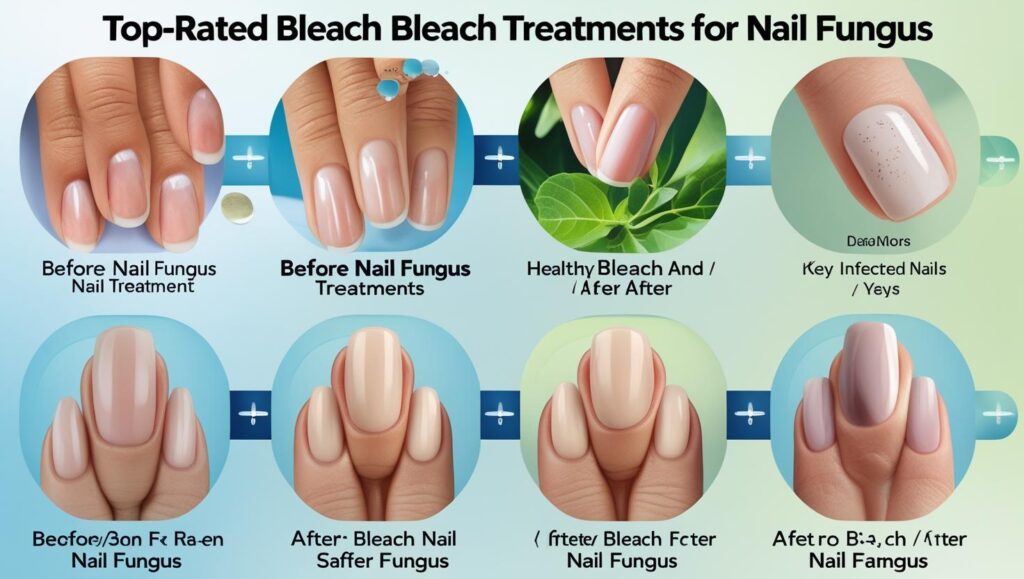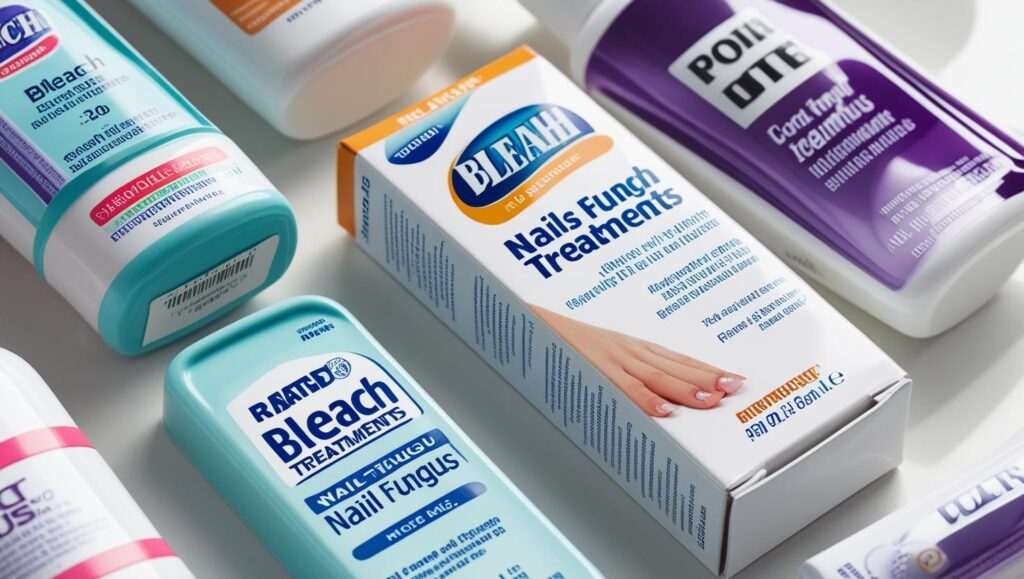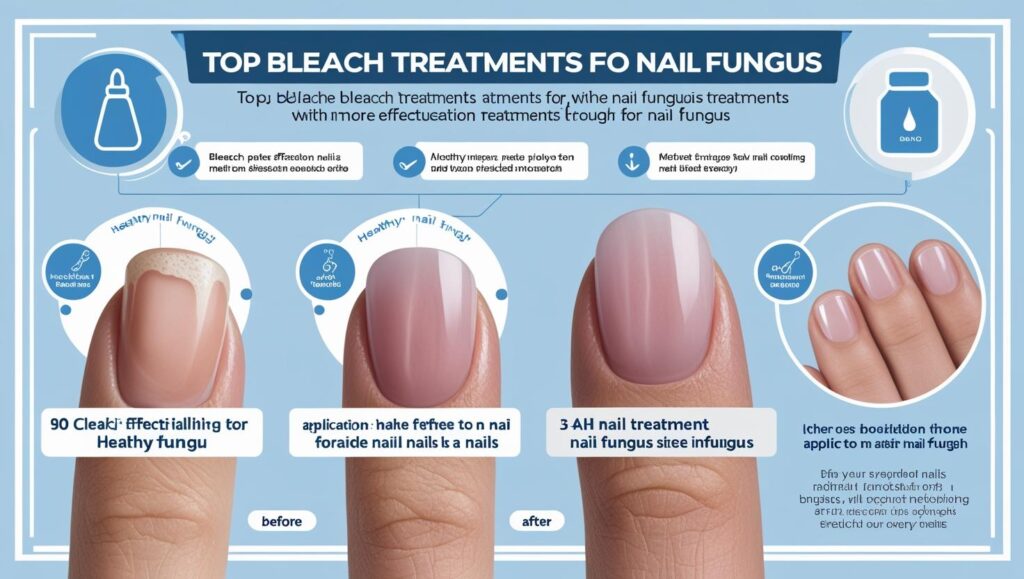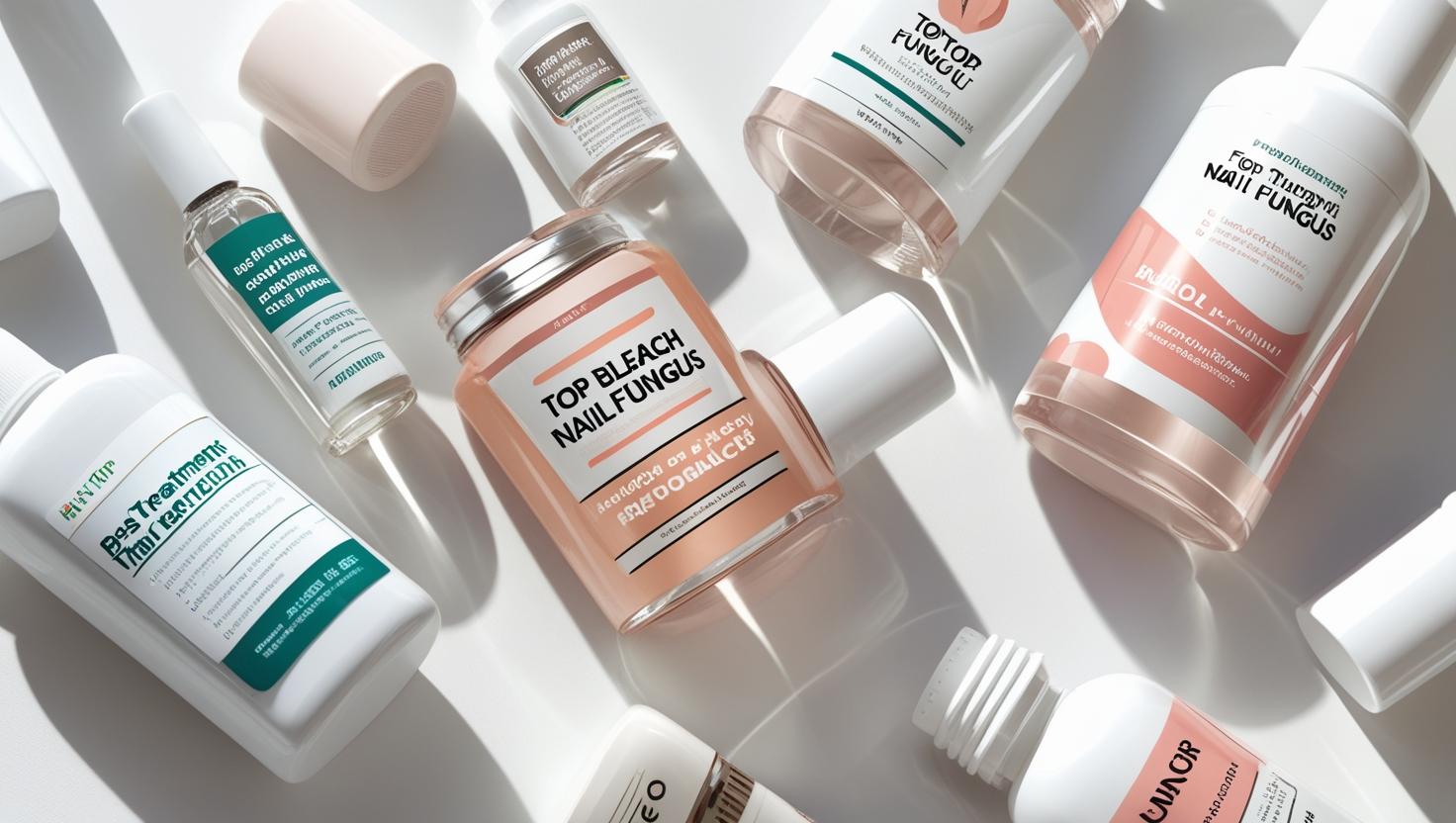Nail fungus, medically known as onychomycosis, is a persistent and often embarrassing condition that affects millions of individuals worldwide. While there are various over-the-counter and prescription treatments available, bleach has emerged as a widely discussed home remedy due to its antifungal properties. In this comprehensive guide, we explore the top bleach treatments for nail fungus, how to use them safely, and which methods yield the best results.

What Is Nail Fungus and Why Does It Occur?
Nail fungus is caused by dermatophytes, yeasts, or molds that thrive in warm, moist environments. It commonly affects toenails due to the confined nature of footwear and poor ventilation. Symptoms include:
- Thickened, discolored nails
- Crumbling at the edges
- Foul odor
- Pain or discomfort
Fungal infections are notoriously difficult to treat and require consistent and targeted approaches, which is where bleach can play a crucial role.
Can Bleach Kill Nail Fungus?
Yes, bleach (sodium hypochlorite) is a potent disinfectant with strong antimicrobial and antifungal properties. When used correctly and diluted properly, bleach can effectively eliminate the fungi responsible for nail infections. However, improper use can lead to chemical burns, skin irritation, and worsening of the condition, so caution is vital.

Top Bleach Treatments for Nail Fungus
Below are the most effective and commonly used bleach-based treatments for nail fungus, ranked based on safety, effectiveness, and user reviews.
1. Diluted Bleach Soak (Most Recommended)
Ingredients:
- 1 part household bleach (unscented)
- 10 parts warm water
Method:
- Mix bleach and water in a container.
- Soak the affected nails for 10-15 minutes daily.
- Rinse thoroughly with clean water.
- Dry feet or hands completely.
Why It Works:
This method is the safest and most commonly recommended. The high dilution minimizes the risk of skin irritation while maintaining sufficient antifungal activity.
Duration:
Use consistently for 4 to 8 weeks or until the infection clears.
2. Bleach Pen Spot Treatment
Ingredients:
- Household bleach pen (used for laundry)
Method:
- Apply a small amount of bleach directly to the affected nail.
- Let it sit for 15 minutes.
- Rinse off thoroughly.
Why It Works:
This is ideal for targeted application when the infection is localized to a specific nail. The gel formula ensures it stays in place, reducing the risk of exposure to surrounding skin.
Caution:
Only use on nails—not on broken skin.
3. Bleach and Vinegar Soak (Advanced Treatment)
Ingredients:
- 1 part bleach
- 1 part white vinegar
- 10 parts water
Method:
- Mix all ingredients thoroughly.
- Soak affected nails for 5-10 minutes, 2-3 times a week.
- Rinse and dry completely.
Why It Works:
Vinegar lowers the pH of the nail, creating an even more hostile environment for fungus when combined with bleach. This is a more aggressive treatment and should be used with care.
4. Bleach Paste Application
Ingredients:
- 1 teaspoon bleach
- 1 tablespoon baking soda
- Few drops of water to form a paste
Method:
- Mix to form a thick paste.
- Apply directly to affected nail.
- Leave on for 15-20 minutes, then rinse.
Why It Works:
This method adheres to the nail longer and combines the antifungal effect of bleach with the exfoliating power of baking soda.
Precautions When Using Bleach for Nail Fungus
Bleach is effective, but it is also a harsh chemical. To ensure safety and avoid complications:
- Always dilute bleach unless using a bleach pen.
- Never apply to broken or inflamed skin.
- Discontinue use if you experience burning, itching, or redness.
- Do not use bleach in combination with other strong topical treatments without medical advice.
- Avoid prolonged exposure—stick to recommended durations.
Natural Alternatives to Bleach (If You Have Sensitive Skin)
If bleach seems too harsh or you have sensitive skin, consider these natural antifungal remedies:
- Tea Tree Oil: Natural antiseptic and antifungal.
- Apple Cider Vinegar: Mild acidic environment deters fungal growth.
- Oregano Oil: Contains thymol, known for antifungal properties.
These can also be used in rotation with bleach treatments for enhanced results and skin recovery.

How to Maximize Results from Bleach Treatments
For bleach to be fully effective, follow these key supportive measures:
- Trim and file the infected nails weekly.
- Keep feet and hands dry at all times.
- Change socks daily and disinfect shoes.
- Avoid sharing nail clippers or personal care items.
- Use antifungal foot powder after soaking to prevent reinfection.
When to See a Doctor
Bleach treatments are best suited for mild to moderate fungal infections. Seek professional help if:
- The nail is completely discolored or detached.
- Infection has spread to the skin or other nails.
- You have diabetes, neuropathy, or compromised immunity.
- No improvement is seen after 6-8 weeks of treatment.
Final Thoughts: Is Bleach the Best Option for Nail Fungus?
Bleach offers a cost-effective and accessible solution for treating nail fungus, especially in its early stages. When used correctly and consistently, it can significantly reduce fungal presence and restore nail health. However, users must be diligent, cautious, and patient, as visible improvements take several weeks to months, depending on the severity.


Leave a Reply to Will Bleach Get Rid of Toenail Fungus? Cancel reply